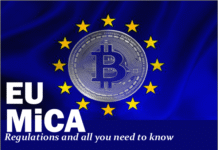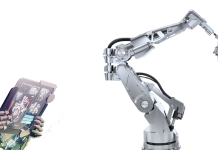According to the report, the infrastructure that companies use for their business operations has shifted from proprietary networks to more adaptable open networks, allowing for greater participation from individuals and smaller businesses but giving the Web2 companies that run or facilitate the networks a disproportionate amount of power. The focus of businesses has shifted from tangible assets to intangible assets, such as implementing new technology to stay competitive, from driving value. Over the years, those technologies have changed from the then-new internet to the ongoing development of decentralized solutions.
Web3, also known as Web 3.0 or the decentralized web, refers to the next evolution of the internet, which aims to create a more decentralized and user-owned internet.
Web3 is built on blockchain technology, which allows for decentralized and transparent record-keeping, and enables the creation of decentralized applications (dApps) that run on a peer-to-peer network rather than a central server.
In contrast to Web 2.0, which is characterized by centralized services such as social media platforms and cloud storage providers, Web3 aims to create a more open and decentralized internet that is less reliant on intermediaries and more focused on user control and ownership of data.
Some of the key features of Web3 include decentralized finance (DeFi), digital identity, decentralized social media, and decentralized cloud computing. Web3 has the potential to transform many industries and drive the next wave of tech innovations.
Web3 is the next evolution of the internet, and it has the potential to transform the way we interact with technology. Here are some ideas on how Web3 could drive the next wave of tech innovations:
- Decentralized Finance (DeFi): DeFi is a new financial system that uses blockchain technology to create decentralized financial applications. With Web3, DeFi could become even more accessible and user-friendly, enabling people to access financial services from anywhere in the world without intermediaries.
- Digital Identity: Web3 can create a decentralized identity system that is more secure, private, and interoperable. This would allow people to own and control their digital identities, making it easier to manage their online presence.
- Digital Art and Collectibles: Web3 could create a marketplace for digital art and collectibles that is more transparent, secure, and decentralized. This would allow creators to monetize their work and provide a new way for collectors to invest in unique assets.
- Decentralized Social Media: With Web3, social media platforms could become decentralized and user-owned. This would give users more control over their data and privacy, and allow for more diverse and independent social networks.
- Internet of Things (IoT): Web3 could provide a secure and decentralized infrastructure for the Internet of Things (IoT). This would allow for more seamless integration of connected devices and enable new use cases for IoT applications.
- Decentralized Cloud Computing: Web3 could create a decentralized cloud computing network that is more resilient, secure, and affordable than current centralized options. This would allow for more efficient use of computing resources and enable new use cases for cloud applications.
Overall, Web3 has the potential to transform many industries and drive the next wave of tech innovations. Its decentralized nature and focus on user ownership and control can create a more equitable, transparent, and accessible digital world.




















